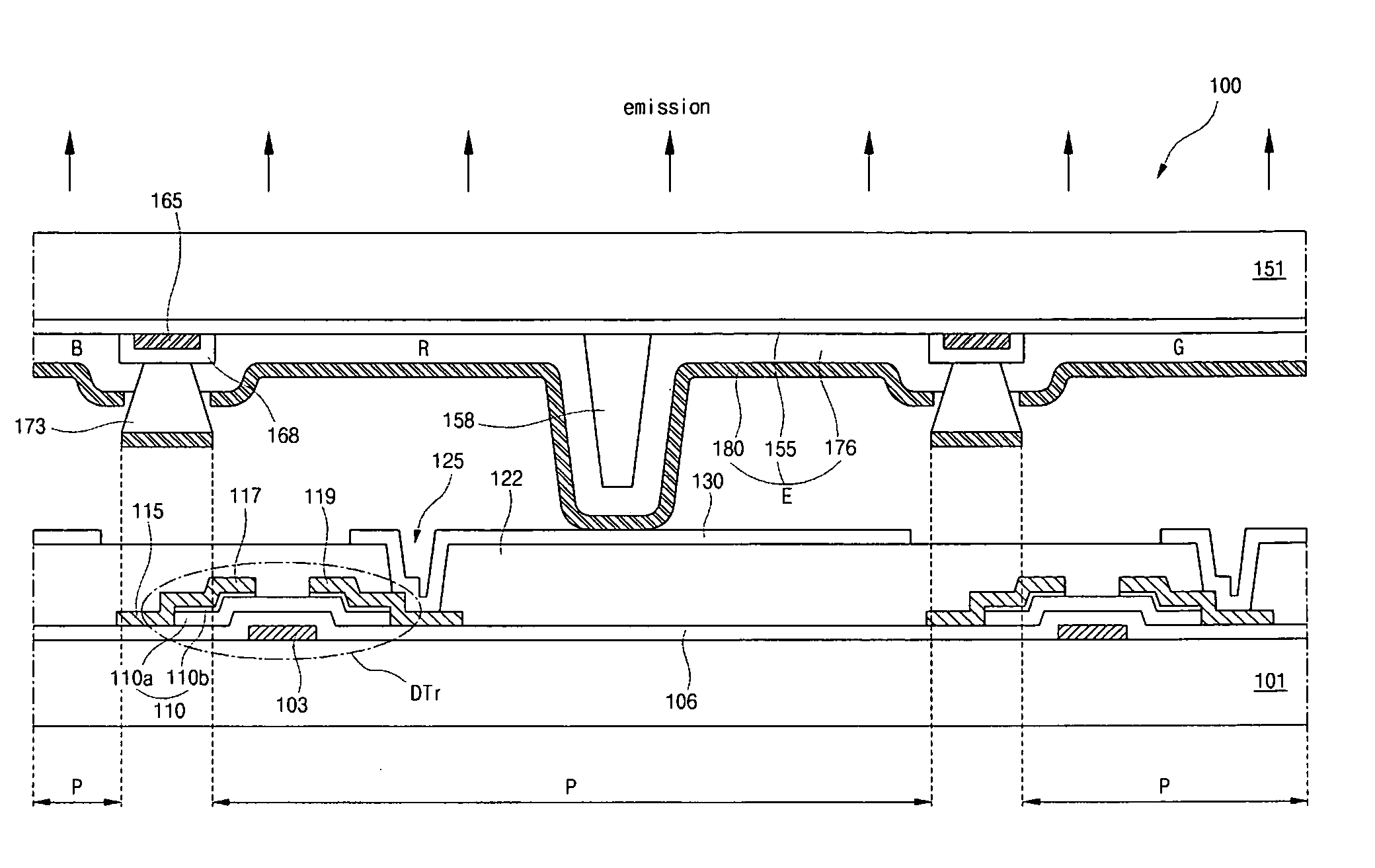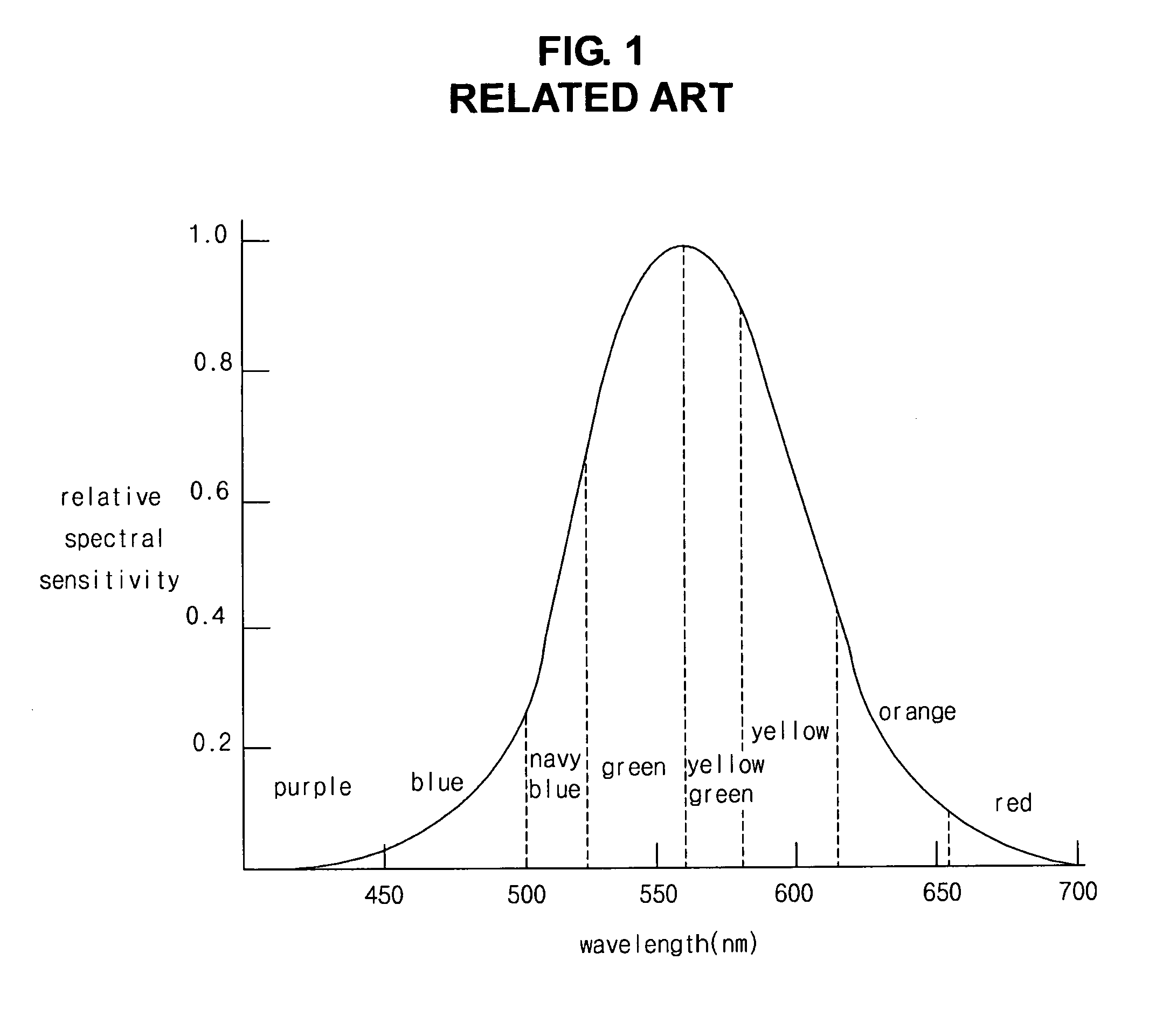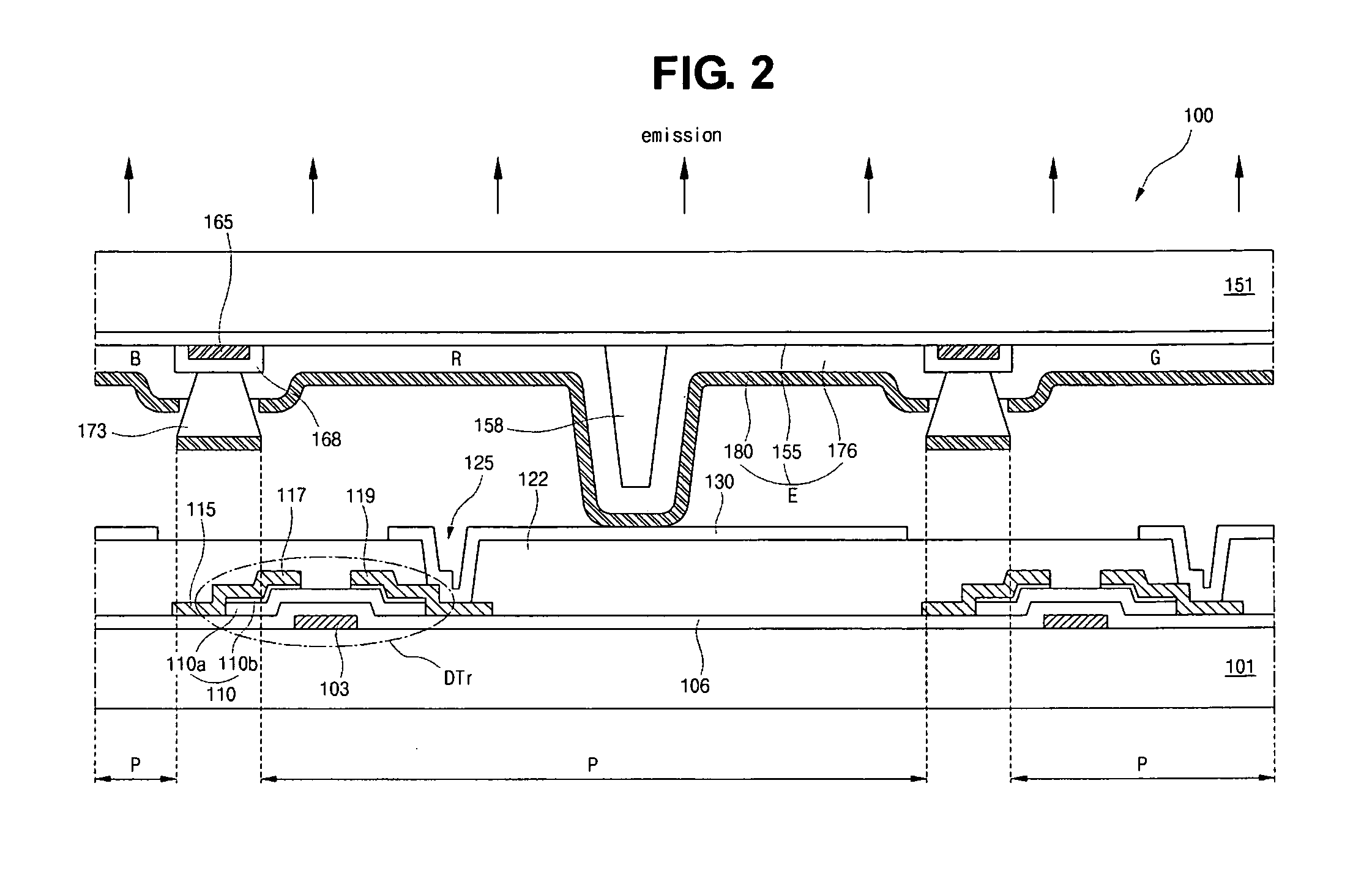Red phosphorescent compound and organic electroluminescent device using the same
- Summary
- Abstract
- Description
- Claims
- Application Information
AI Technical Summary
Benefits of technology
Problems solved by technology
Method used
Image
Examples
synthesis example
[0030]A synthesis example of the red phosphorescent compound represented by A-1 in the Formula 5 is explained. The red phosphorescent compound of A-1 is iridium(III) {2-(3-methylphenyl)-6-(1H-pyrrole-1-yl)quinoline-N,C2′}(2,4-pentanedionate)-0,0).
1. Synthesis of 2-(3-methylphenyl)-6-(1H-pyrrole-1-yl)quinoline
[0031]2-(3-methylphenyl)-6-(1H-pyrrole-1-yl)quinoline is synthesized by following Reaction Formula 1.
[0032]3-methylphenyl boronic acid (13 mmol), 2-chloro-6-fluoroquinoline (10 mmol), tetrakis(triphenylphosphine)palladium(0) (0.5 mmol) and potassium carbonate (15 g) are put in a two-neck round-bottom flask and dissolved in tetrahydrofuran (THF) (30 mL) and H2O (10 mL). Subsequently, the resulting solution is stirred in a bath under a temperature of about 100° C. for 24 hours. After completion of the reaction, THF and toluene are removed. The reaction mixture is extracted with dichloromethane and water, and then being distilled under reduced pressure. The resulting residence is f...
example 1
[0038]An indium-tin-oxide (ITO) layer is pattered on a substrate and washed such that an emission area of the ITO layer is 3 mm*3 mm. The substrate is loaded in a vacuum chamber, and the process pressure is adjusted to 1*10−6 torr. CuPC (about 200 angstroms), 4,4′-bis[N-(1-naphtyl)-N-phenylamino]-biphenyl (NPD) (about 400 angstroms), aluminum(III)bis(2-methyl-8-quinolinato)-4-phenylphenolate (BAlq)+A-1 compound (about 5 weight %) (about 200 angstroms), Alq3 (about 300 angstroms), fluorolithium (LiF) (about 5 angstroms) and aluminum (Al) (about 1000 angstroms) are sequentially formed on the ITO layer such that an OELD is fabricated.
[0039]When the A-1 red phosphorescent compound is used as a dopant for an emission layer, the OELD produce a brightness of 1513 cd / m2 at an electric current of 0.9 mA and a voltage of 5.7 V. At this time, the X index and Y index of CIE color coordinates are 0.667 and 0.331, respectively. In addition, the OELD has a lifetime of 5700 hours at 2000 cd / m2. The...
example 2
[0040]An ITO layer is pattered on a substrate and washed such that an emission area of the ITO layer is 3 mm*3 mm. The substrate is loaded in a vacuum chamber, and the process pressure is adjusted to 1*10−6 torn CuPC (about 200 angstroms), NPD (about 400 angstroms), BAlq+A-13 compound (about 5 weight %) (about 200 angstroms), A1q3 (about 300 angstroms), LiF (about 5 angstroms) and Al (about 1000 angstroms) are sequentially formed on the ITO layer such that an OELD is fabricated.
[0041]When the A-13 red phosphorescent compound is used as a dopant for an emission layer, the OELD produce a brightness of 1595 cd / m2 at an electric current of 0.9 mA and a voltage of 5.6 V. At this time, the X index and Y index of CIE color coordinates are 0.672 and 0.325, respectively. In addition, the OELD has a lifetime of 6800 hours at 2000 cd / m2.
PUM
| Property | Measurement | Unit |
|---|---|---|
| Weight | aaaaa | aaaaa |
| Electrical conductor | aaaaa | aaaaa |
| Transparency | aaaaa | aaaaa |
Abstract
Description
Claims
Application Information
 Login to View More
Login to View More - Generate Ideas
- Intellectual Property
- Life Sciences
- Materials
- Tech Scout
- Unparalleled Data Quality
- Higher Quality Content
- 60% Fewer Hallucinations
Browse by: Latest US Patents, China's latest patents, Technical Efficacy Thesaurus, Application Domain, Technology Topic, Popular Technical Reports.
© 2025 PatSnap. All rights reserved.Legal|Privacy policy|Modern Slavery Act Transparency Statement|Sitemap|About US| Contact US: help@patsnap.com



